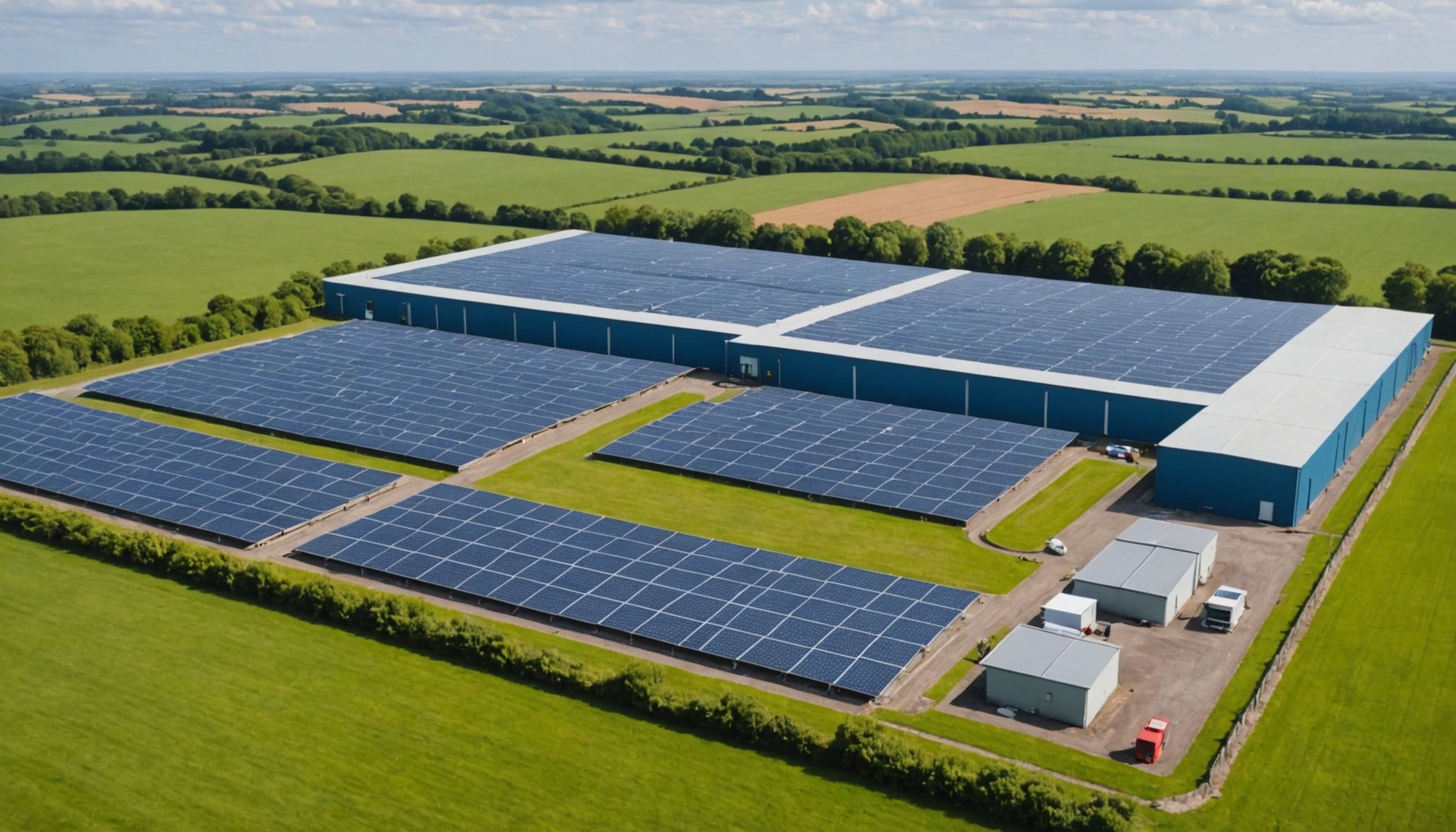Unlocking Success: The Ultimate Blueprint for Starting Your Renewable Energy Storage Venture in the UK
Understanding the UK’s Energy Transition
The UK is at the forefront of the global energy transition, with ambitious targets to reduce greenhouse gas emissions and achieve a net zero economy by 2050. This transition is driven by a significant shift from fossil fuels to renewable energy sources, and energy storage plays a crucial role in this process.
“Flexibility is essential for a resilient and sustainable energy future,” notes José Davila, E.ON UK’s Director of Strategy and Innovation. “Everyone has a part to play as we adapt to this new energy landscape, from millions of customers at home or in business, to grid-scale storage stabilising the grid and ensuring energy reliability for our customers”[2].
This might interest you : Unlocking uk liquor licensing: the essential guide for your virtual wine tasting enterprise
To support this transition, the UK needs to substantially increase its energy storage capacity. According to Storelectric, the UK will require over 200GW of nameplate renewable energy storage capacity to meet its peak demand and ensure energy security as the last fossil fuelled power stations are retired[3].
Market Opportunities and Financial Outlook
The UK energy storage market is poised for significant growth, driven by increasing demand for renewable energy and the need for reliable grid stability.
Also to see : Your ultimate blueprint for launching a marine conservation consultancy in the uk
Revenue Projections and Market Growth
Cornwall Insight forecasts a rebound in UK battery revenues, with annual revenues for 2-hour assets expected to rise from approximately £96/kW in 2025 to £108/kW by 2026. This growth is attributed to rising wholesale prices and greater price volatility, alongside the expansion of renewable energy generation[1].
| Year | Revenue per kW (£) |
|---|---|
| 2025 | ~£96 |
| 2026 | ~£108 |
The energy storage as a service market in the UK is also expected to grow, with a projected revenue of $151.5 million by 2028, representing a compound annual growth rate (CAGR) of 10.1% from 2020 to 2028. The largest segment of this market is customer energy management services, while ancillary services are the fastest growing segment[4].
Investment Opportunities
Investing in energy storage is becoming increasingly attractive, with several financial mechanisms being proposed to de-risk investments. E.ON and Seagrass suggest tapping into carbon markets, such as the UK’s Emissions Trading Scheme (ETS), to create new revenue streams for battery storage operators. This approach can make energy storage projects more bankable and appealing to private investors[2].
Gresham House highlights a significant investment opportunity in the renewables sector, estimating over £80 billion in potential investments by 2050. This includes a focus on battery energy storage, with the current installed capacity needing to increase tenfold in the next 2-3 years to avoid significant grid imbalances[5].
Overcoming Barriers to Investment
Despite the promising outlook, several barriers need to be addressed to unlock the full potential of energy storage in the UK.
Bankability and Financing
One of the key challenges is the bankability of energy storage projects. The report by E.ON and Seagrass proposes three market-driven solutions to increase bankability:
- Monetizing Emissions Reductions: Using carbon markets to create new revenue streams for battery storage operators.
- Merchant Trading: Engaging in merchant trading to buy electricity at low prices, store it, and sell it back to the grid when prices rise.
- Policy Reforms: Implementing market reforms that can unlock private sector capital without relying on public funding[2].
Skip Rates and Grid Integration
Battery operators face another challenge known as “skip rates,” where their power bids are passed over by utilities in favor of traditional fossil fuel generators. The National Energy Systems Operator (NESO) reported that most battery projects in the UK see a skip rate of about 30%. Addressing this issue through better grid integration and policy support is crucial for the viability of energy storage projects[2].
Choosing the Right Technology
The UK’s energy storage needs can be met through various technologies, each with its own advantages and challenges.
Battery Energy Storage Systems (BESS)
Battery energy storage systems are widely used and continue to be a significant part of the UK’s energy storage landscape. Gresham House, for example, has a growing portfolio of utility-scale operational BESS located in Great Britain. However, batteries have limitations in terms of duration and cost, particularly for long-duration storage needs[5].
Compressed Air Energy Storage (CAES)
CAES is another viable option, especially for long-duration storage. Storelectric’s CAES solutions are more efficient than batteries and less expensive than pumped hydro storage. CAES can be built using current technologies and has low technical risk, making it a promising solution for the UK’s energy storage requirements[3].
Practical Insights and Actionable Advice
Starting a renewable energy storage venture in the UK requires careful planning and a deep understanding of the market and technological landscape.
Conduct Thorough Market Research
Before investing, it is crucial to conduct thorough market research. This includes understanding the current market trends, future projections, and the regulatory environment.
Diversify Your Revenue Streams
Diversifying revenue streams can help mitigate risks. For example, engaging in merchant trading, participating in ancillary services, and leveraging carbon markets can provide multiple revenue streams for energy storage operators[2].
Collaborate with Industry Experts
Collaborating with industry experts and companies like E.ON, Seagrass, and Gresham House can provide valuable insights and support. These companies have extensive experience in the energy sector and can offer guidance on navigating the complexities of the market[2][5].
Case Study: Successful Energy Storage Projects
E.ON’s Grid-Scale Storage Projects
E.ON’s partnership with Quinbrook to build a 230MW battery in Newport, South Wales, is a prime example of successful grid-scale storage projects. This project demonstrates the potential for large-scale energy storage to stabilize the grid and ensure energy reliability[2].
Storelectric’s CAES Projects
Storelectric’s CAES projects, which aim to provide long-duration energy storage, are another example of innovative solutions. These projects can help balance the grid during evening peaks and support baseload demand, making them crucial for the UK’s energy transition[3].
Starting a renewable energy storage venture in the UK is a promising and necessary step towards achieving the country’s net zero targets. By understanding the market opportunities, overcoming barriers to investment, choosing the right technology, and following practical insights, entrepreneurs and investors can play a vital role in this transition.
As Joe Camish, Lead Analyst at Cornwall Insight, notes, “This will be encouraging news for investors and asset owners, signalling a more robust and sustainable future for battery storage investments for the remainder of the decade”[1].
The future of energy is green, and with the right strategies and technologies, the UK can lead the way in this global transition. Here are some key takeaways for anyone looking to venture into this exciting field:
- Market Growth: The UK energy storage market is expected to grow significantly, driven by increasing demand for renewable energy.
- Financial Mechanisms: Leveraging carbon markets and implementing market reforms can make energy storage projects more bankable.
- Technological Choices: Battery energy storage and CAES are viable options, each with its own advantages and challenges.
- Collaboration: Working with industry experts and companies can provide valuable insights and support.
- Diversification: Diversifying revenue streams can help mitigate risks and ensure long-term sustainability.
By embracing these strategies and staying informed about the latest developments in the field, you can unlock the full potential of your renewable energy storage venture in the UK.










